[Note: This post is adapted from a keynote presentation I gave at the Energy Impact Partners annual meeting in May 2023.]
I find timelines to be one of the most underappreciated variables in the energy transition. It’s now cliche to point out that humans are very bad at thinking in climatic timescales. This quirk is widely recognized as one of the reasons we’re struggling, civilizationally, to react to the threat of climate change. But even for those of us who are trying our best to react, it’s still difficult to wrap our minds around the timescale in which we have to do so.
So, I thought I’d take a shot at translating the timeline we have to work with into the timescale of a human life.
Actually, I’m going to tell you about two human lives, both of whom are very important to me, and both of whom have Nanette in their names.
Two Nanettes
First, let me introduce you to my grandmother, Nanette Stearns Katz, or “Nancy”.
Nancy was a voracious reader. She was a mother of four, including my mom. She was a lover of Lake Michigan, living in and around Chicago her whole life. She usually kept root beer or orange soda in the fridge.
She died just a couple of weeks before the pandemic began in March 2020. In retrospect, this was probably fortunate timing, as I think Nancy would have really wilted under pandemic era life restrictions.
In fact, Nancy’s life was fortunate in a number of ways. For one thing, it was quite long. She lived over 90 years - a nice, long human lifetime which I’ll refer to for the remainder of this post as “One Nanette”. Nancy achieved this nice long lifetime despite smoking cigarettes until she was around 60 years old, and beating back cancer three times along the way.
Nancy’s life was also fortunate in two more ways. First, she lived through the greatest period of technological progress in human history. Second, she and her peers didn’t fully comprehend the cost of this progress until fairly late in their lives.
Nancy’s life spanned about 93% of all anthropogenic CO2 emisions to date. In many ways, her life story is also the story of how we got ourselves into this mess.
It’s difficult to overstate just how much progress these carbon emissions underpinned. They enabled Nancy to live a life of plenty that her parents, who were poor immigrants from Eastern Europe, would never have imagined. Her parents came to the US on a boat, as that was their only option. By the time Nancy had grandchildren, she would regularly fly in commercial airplanes to visit us in Massachusetts. And by the time she died, a lot more people around the world were getting to live like she had.
This is a very good thing! Everyone deserves to enjoy the wonderful things that abundant fossil energy provided to Nancy during her lifetime. We can’t assume that we’re going to turn back the clock on demand for any of the good stuff that we get from energy, from air conditioning to air travel. Quite the opposite, in fact, we need to assume that demand for these services will continue to grow. For example, the IEA forecasts an increase in global electricity demand from cooling alone that’s equivalent to the entire US electricity sector today. (At least, that’s the IEA forecast absent a game-changer in air conditioning efficiency, like the technology being pioneered by EIP portfolio company Transaera.)
That brings me to Nanette #2. This is my daughter, Eliza Nanette Letourneau, who we often call “Nuni”.
Like her great grandmother & namesake, Nuni loves books. She also loves sweet corn on the cob. We sometimes compare her to a gnome. She’s cuddly as hell.
From the standpoint of carbon emissions, Nuni’s life is going to need to be a mirror image of Nancy’s. Actually, it’s going to need to be a sort of funhouse mirror image, in the sense that the decline in emissions we’re aiming for during Nuni’s life will need to be more than three times as steep as the growth in emissions during Nancy’s lifetime.
In other words, achieving mid-century decarbonization - which I do believe we need to aim for in order to stave off the worst risks of climate change - means decarbonizing in a third of a ‘Nanette’. By the time Nuni is an adult, with a job, a mortgage, and maybe even kids of her own…we’ll know how successful we’ve been at this monumental task.
Oh, and by the way: In order to really maximize our chances of avoiding worst-case climate scenarios, we’ll actually want human civilization to be carbon negative throughout most of Nuni’s life…absorbing more carbon dioxide from the atmosphere than we put into it.
Paying attention to timelines
If you’ve been paying attention for the past 15 years, then you’ve followed the remarkable story of solar photovoltaics. Solar PV began this century much too expensive to use outisde of applications in which it was basically the only option, like satellites. Now, of course, it’s being deployed at terawatt scale, and in some parts of the world it’s the cheapest source of primary energy available.
Solar is an example of the tremendous speed with which economies of scale can drive down the cost of manufactured goods. However, it also offers a lesson in just how long new technology can sit on a proverbial shelf before it’s given the chance to achieve that kind of scale. Grandma Nancy was not yet born when Einstein published his theory on the photoelectric effect, which laid the foundation for Bell Labs to invent the first photovoltaic cell…when Nancy was a young mother.
When it comes to the next wave of transformational climate & energy technology, we just don’t have this kind of time. Any new technology that’s being cooked up in a university lab, or startup company garage, needs to be ready for widespread global rollout by around the time Nuni is packing up to leave home for college. (Or, surf school, or whatever the hell she decides to do with her one wild and precious life.) That means overcoming two archetypal “valleys of death” for new technology development in record time.
The first valley of death is a technical one. Surmounting it requires proving out the scientific & engineering principles underpinning a new solution, to the point at which one can construct a minimum viable product for commercial demonstration.
The second valley of death, in my opinion, is even harder to overcome. This commercial valley of death is a common fate for technology that works well enough, but never manages to enter a positive flywheel of deployment, commercial validation, and manufacturing scale, which leads to rapid gains in economic competitiveness and bankability.
This kind of speed is, admittedly, quite rare in “hard tech” or “deep tech”. It’s especially rare in the energy & industrial sectors, which are understandably conservative given they operate massive critical infrastructure assets, often at some combination of high voltage, high temperature, high pressure…and low margins. However, there are examples of new technology breaking through in these sectors. In fact, there’s one recent example of energy technology that beat even cell phones to mass market adoption.
That technology is “fracking” - the combination of hydraulic fracturing and horizontal drilling which took over from conventional US oil & gas wells faster than cell phones took over from landlines. I should note that wind power hasn’t quite kept up with fracking, but it’s also been on a remarkable trajectory (and now solar is following suit).
Speaking of wind and solar, one of the reasons that these two technologies have become such foundational building blocks of the energy transition is that they’re so quick to deploy. It’s quite possible to imagine a single wind or solar project developer building four, five, perhaps even six projects in series from the time Nuni was born to the time she ‘s freaking me out by driving off to parties.
But, this is also an area in which we need to be careful about timelines, because wind & solar project development needs to contend with some big potential bottlenecks. Most critically, large wind & solar power is highly dependent on electric transmission; and access to transmissions is already becoming a rate-limiting step. Data from the past few decades shows that on average, it takes about 10 years for a new electric transmission project to progress from conception, to planning, permitting, construction, and finally moving power.
Hence, the pace of electric transmission growth has quickly become one of the biggest question marks in the course of the energy transition. Energy system modelers plotting out pathways to net-zero carbon tend to find that the least-cost scenarios are those in which a surge in transmission build enables very high levels of wind & solar energy. For example, one of the core scenarios in the landmark Princeton “Net Zero America” study suggests that the US will need about 600 terawatt-miles of transmission by mid-century. You don’t have to be able to conceptualize a terawatt-mile to see that we are, at best, on track to achieve only about half of that target.
If electric transmission falls short, renewables too will almost certainly fall short. That means we’re going to need at least one more source of zero-carbon primary energy.
Nuclear energy is often considered a sort of backstop in this regard. After all, it’s a technology we invented in the 1950s, deployed at scale in the 60’s and 70’s, and still supplies about 18% of our electricity today. However, recent experience suggests that in the US, timelines are not on nuclear’s side. There’s been only one new nuclear power plant fully planned & constructed in the past four decades…and it took more than two of those decades to go from an idea to clean electrons.
It’s worth pointing out that for the US and other developed countries that have turned their back on nuclear, this problem is entirely our own fault. Nations that have continued to pursue a responsible nuclear energy strategy in recent decades have proven capable of building new plants with timelines and cost levels consistent with the US experience of the 1960s. In the US we have a particularly onerous regulatory regime stemming from a particularly negative degree of public sentiment towards nuclear.
More timelines! Nuni’s family (my family) just bought a new car: a Kia Sorento plug-in-hybrid.1 We also have a fully electric vehicle, which we bought about four years ago. So, you could say we’re about a 75% electric vehicle household. We’re probably only going to get one or two more chances to become a fully electric vehicle household by the time Nuni leaves home.
The first time we bought an EV back in 2018, my household’s decision to buy an EV was a really weird exception…but ten years from now I’m pretty convinced that going electric is going to be the norm. (Just about every major automaker agrees with this assessment.) But this coming surge in EV demand brings up another big timeline problem: I’m not sure we’re going to be able to grow the EV supply chain fast enough to manufacture the next EV that my family is going to want to buy.
There are all kinds of potential rate-limiting steps in the EV supply chain, from raw materials extraction all the way to final vehicle production. I’ll highlight just one key constraint here, which is copper. The average EV requires 4-6 times as much copper as the average internal combustion engine vehicle, mostly because electric motors are full of it. Meanwhile, copper is already the third most consumed metal in the world, which means even a small percentage increase in production will require truly monumental effort. At present, we’re simply not on track to open new copper mines fast enough to keep up. The last major, global copper mine took about 30 years to go from discovery to productivity. That’s longer than Nuni will take to go from her ‘discovery’ to becoming a productive citizen!
The last timeline problem I want to highlight is a retrospective one. Think back 20 years prior to Nuni - back to the glory days of 2002. Here’s a photo of me, for context, with a lot more hair, and a lot less professional ambition.
In the 20 years since, while my prefrontal cortex has done a lot of growing up, so have the coal industries in China and India. In fact, over 40% of all the world’s coal consuming capacity was added since the turn of the century, and more than a third was added since just 2010 - mostly in those two countries.
If these assets are allowed to live out their 30+ year useful lives without substantial carbon mitigation, via either retrofit or replacement, then we’re well & truly screwed. Nuni could easily go on a post-college backpacking tour around the world and still see carbon emissions pouring out of those smokestacks.
Thinking in timelines
To me, thinking in timelines suggests a few obvious priorities for anyone concerned with developing and deploying climate solutions. Incidentally, I think these are three of the attributes that led to such rapid adoption for both fracking and wind power…
Of course, we need to adapt proven technology as much as possible. Starting from scratch inevitably adds years before a new solution can make a dent in emissions.
Of course, we also need to seek out no-brainer value propositions. I recognize that this, in itself, sounds like a no-brainer value proposition. But then again, someone thought The Metaverse was a good idea, so I guess it still bears repeating.
And of course, we need to prioritize drop-in readiness. We have tens of trillions of dollars in energy & industrial infrastructure already deployed, and we should use as much of it as possible.
All of this sums up to a mantra I believe everyone focused on climate ought to repeat each morning: Easy & fast beats best.
And yet…there are a whole bunch of problems along the road to net-zero carbon for which there are simply no easy & fast solutions. There are also some categories of technology in which we can already see great potential to address these problems, which we know could take decades or even centuries to mature - at least, absent the urgency of addressing climate change. This raises a critical question: How do we compress decades into years?
Fortunately, there are plenty of examples in human history in which this has already occurred. The renaissance in Florence, Italy arguably compressed centuries of progress in art and science into decades.
The American revolution and subsequent period of constitutional formation compressed centuries of progress in political theory and the establishment of a new system of government into decades.
The Manhattan project compressed centuries of progress in fundamental mathemetics and physics into just a few years.
The US government deliberately mustered the resources to do this sort of thing during the space race…quite successfully!
We need a climate tech renaissance / revolution
If we’re going to decarbonize in a third of a Nanette, we’re going to need that third of a Nanette to be just this sort of extraordinary period.
So, thinking along these lines led me to list out what I see as the ingredients of a renaissance, or a revolution. Here’s what I’ve come up with:
As I generated this list, I found myself becoming more & more encouraged. I realized that we already have all these ingredients today. In fact, I think it’s fair to say we’re already in a climate tech renaissance.
We have our Leonardo. Here’s Yet-Ming Chiang.
We have our Michelangelo. Here’s my EIP Partner Shayle Kann.
We have our Medicis. For example, here’s some more of our wonderful investment Partners at EIP.
We have our Florence/s. For example, Stanford & MIT have become global hubs of climate tech innovation, where scientists and engineers mix & mingle with investors and policymakers.
We’re motivated by shared visions and threats.
And so, we’re living through a climate tech renaissance which is enabling great companies to accelerate through the technical valley of death in record time.
One example is our portfolio company at EIP, Rondo Energy. When we first met the Rondo team, pretty much all they had was a talented team, a great vision, some computer models and a basic prototype. Fast forward two years, and the company has built a commercial demonstration project: a big box taking in intermittent electricity, heating up special bricks to over 2,000 degrees Fahrenheit, and then dispatching that heat continuously to fuel an industrial process for a real customer.
The question for our time is whether this climate tech renaissance can also compress the time that it takes for companies like Rondo - of which we’ll need dozens, in order to successfully decarbonize by mid-century - to reach global scale.
And of course, that commercial valley of death is the one that venture capital is not so well suited to addressing. Whether we succeed or fail at this great challenge will depend mostly on infrastructure investors, owners and operators, alongside big consumers of energy. It will depend on the people making all of the really big decisions about capital allocation over the coming decades.
At the EIP annual meeting - which was attended by a few hundred of these sorts of people - I ended this talk with a challenge.
My challenge is to embody the final ingredient of a renaissance or revolution: Prudently, responsibly…be bold. The only way we’re going to decarbonize in a third of a Nanette is by trying and failing fast…so that we can learn from our early mistakes and try again.
This challenge reminds me of some advice that Grandma Nancy gave me in a letter, just before I headed off to college. She said:
There is so much to learn and always will be.
Last year, Nuni was not the only baby born to an EIP family. In fact, there were nine babies born to families at my relatively small company in 2022. One thing I know for sure is that these babies will be doing a lot of trying and failing over the coming third of a Nanette (and third of a Cal, and third of an Aiden, and third of an Avery, etc…).
I hope you agree with me that we should follow in their footsteps.
That was just about the only hybrid electric vehicle capable of carrying around two little kids and all their acoutrements which we could find within 200 miles last summer.







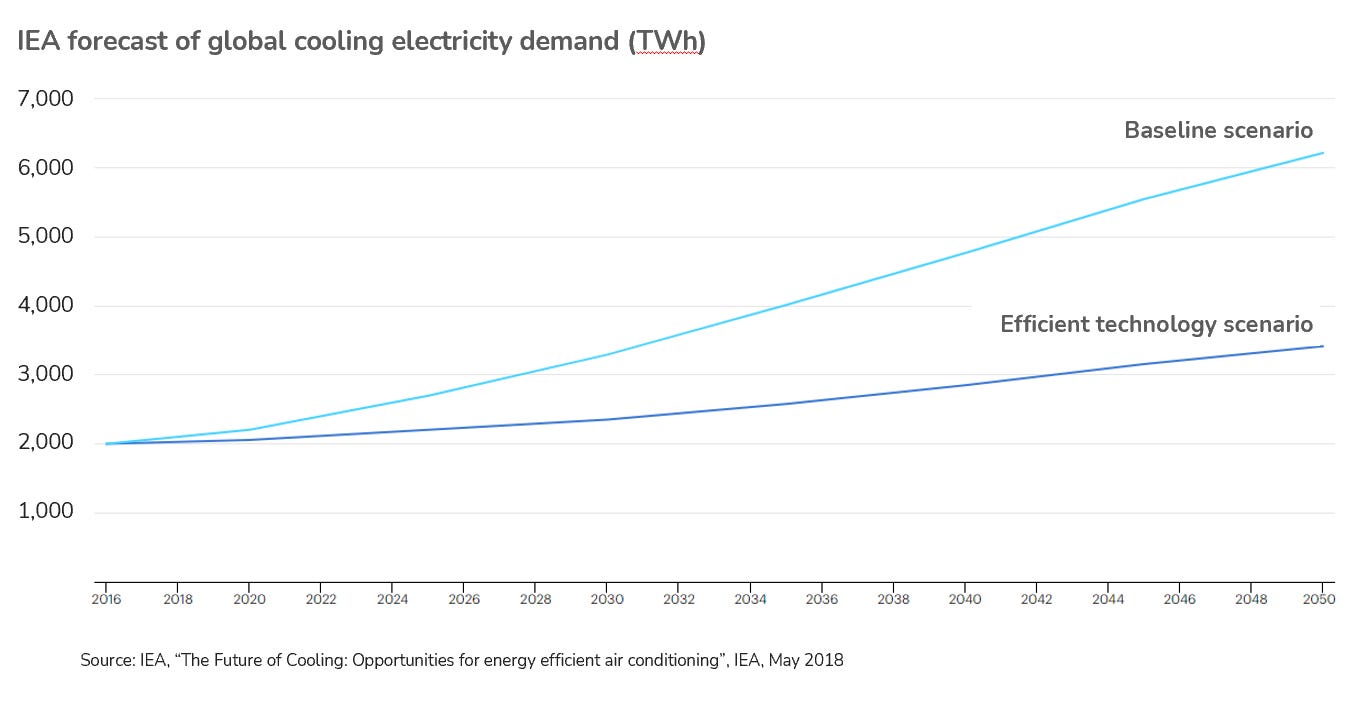













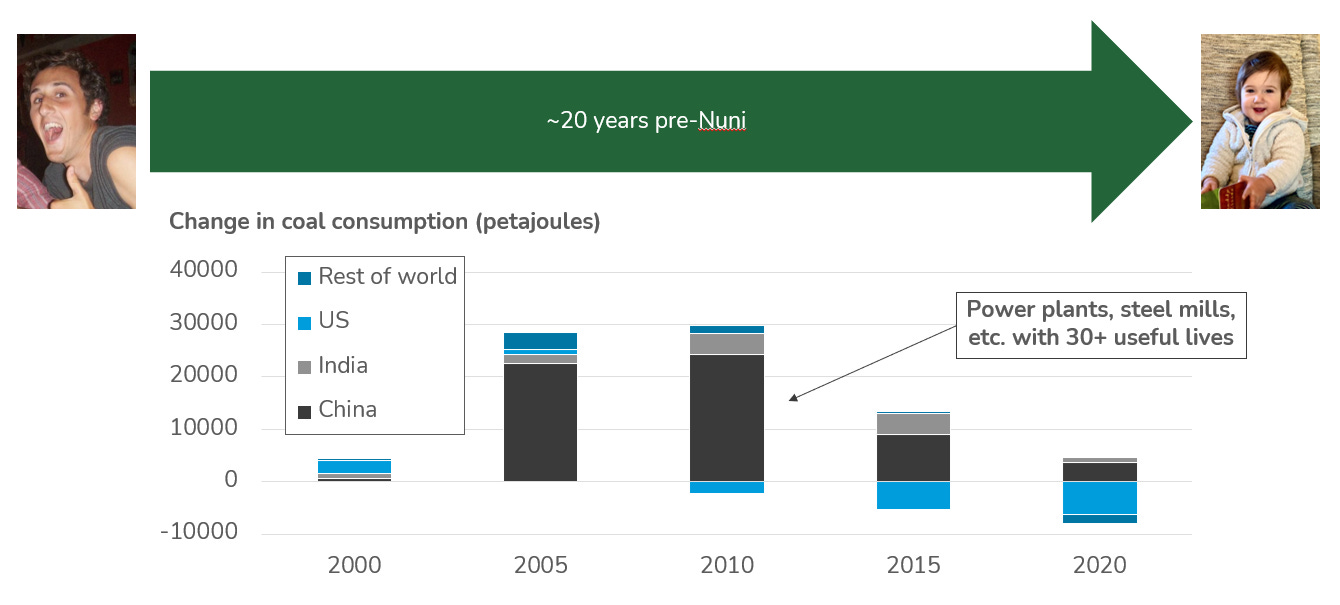

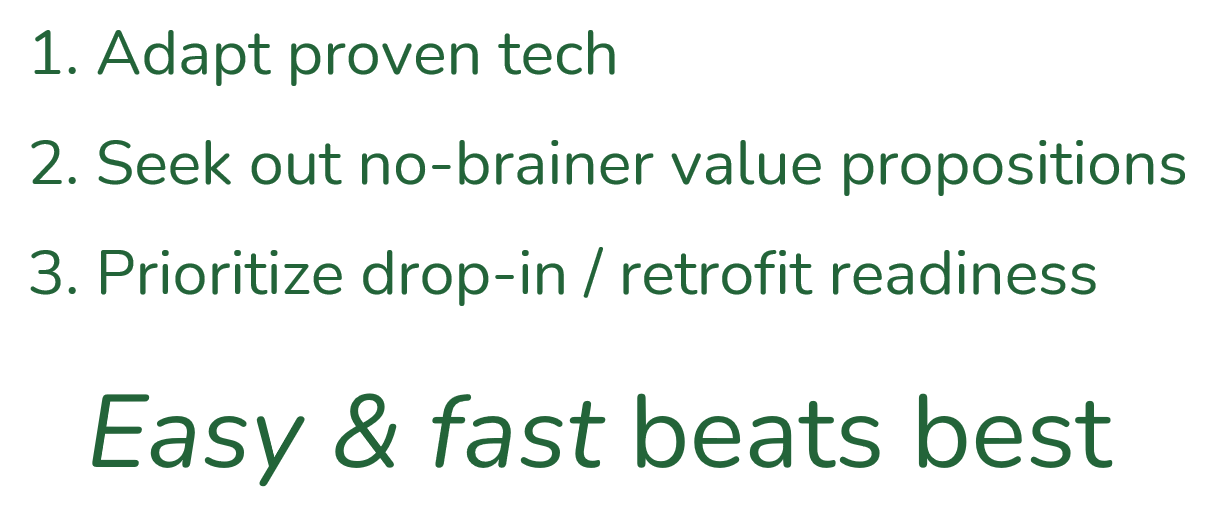



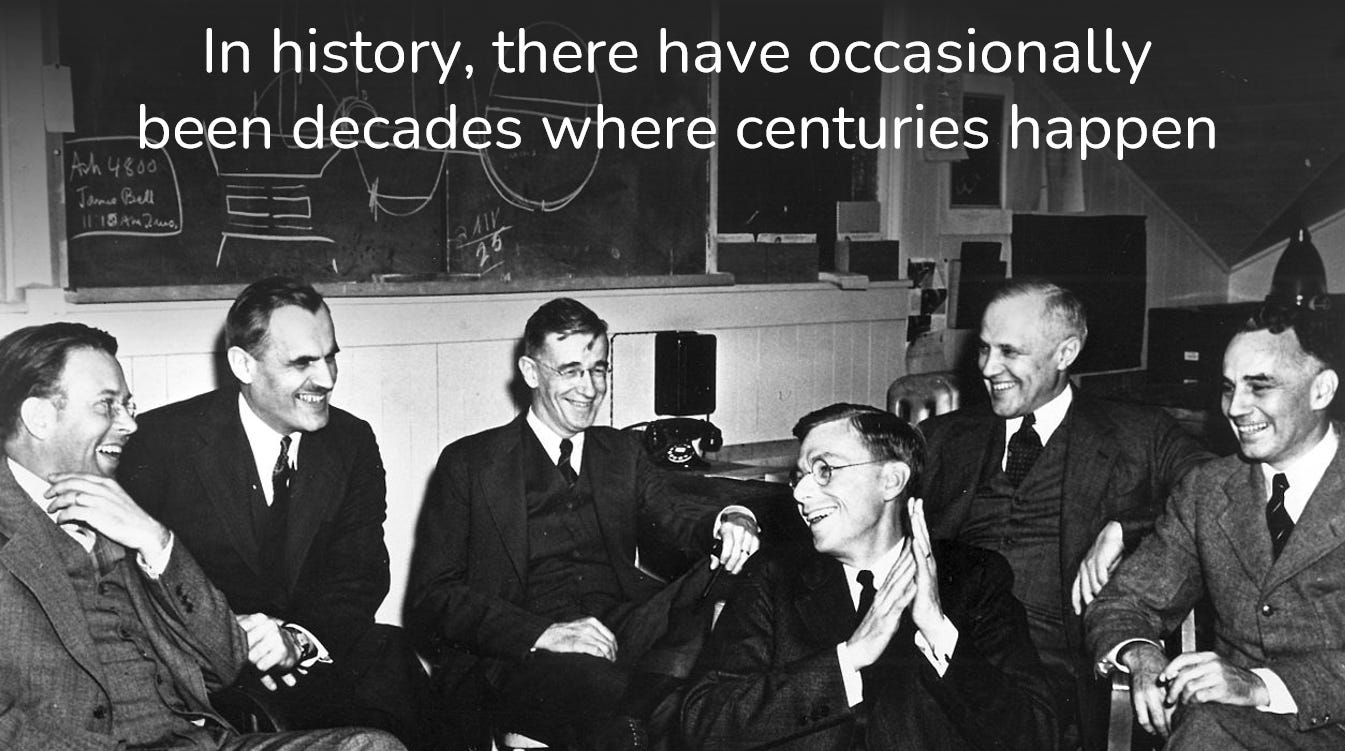


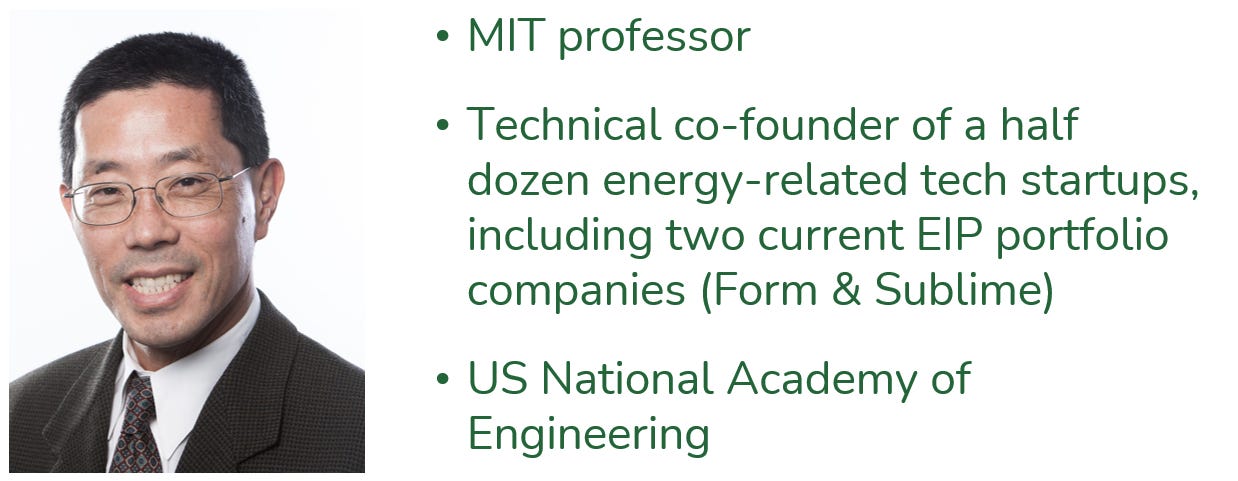







Achieving challenging net zero targets will require ingenuity. But it will also require a level of personal sacrifice that homo-economicus cannot achieve.
One of the better analogies I've read in a long while. Keep up the great writing 🙌
I've written about a similar convergence (talent + vision + tech + ...) in this essay: https://delphizero.substack.com/p/emergence-of-climate-scenius